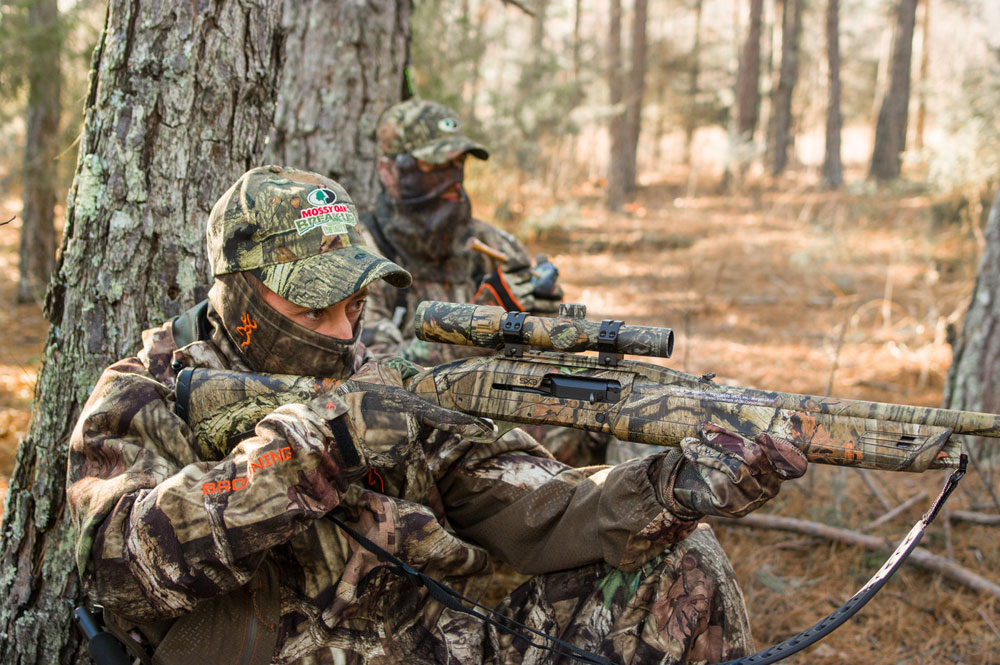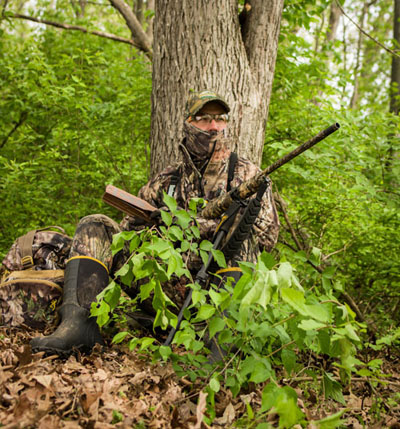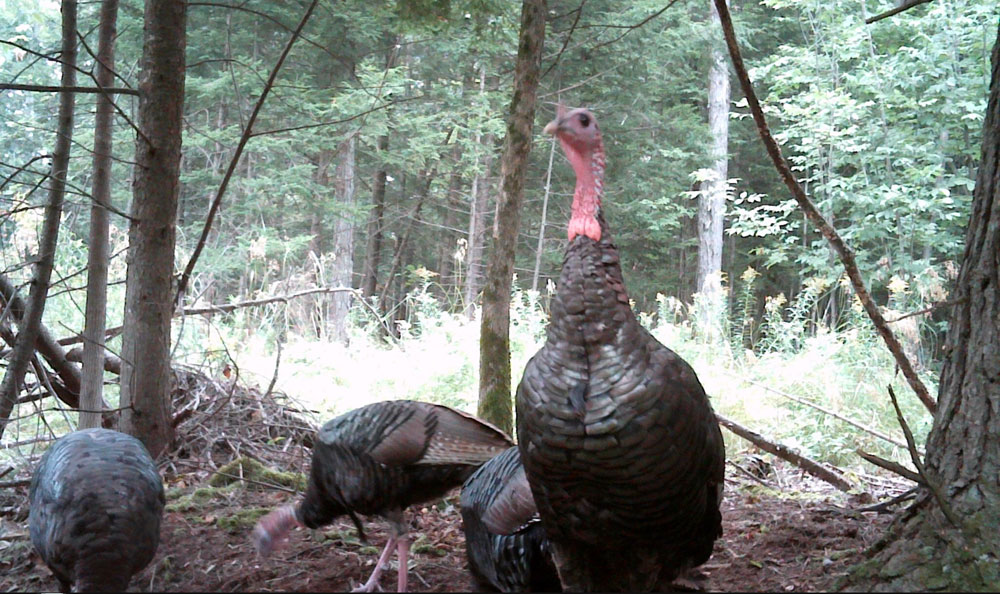Tips for taking turkeys on up in the season.
Bob Humphrey
Opening day of turkey season dawns and fills the turkey hunter with all the anticipation, excitement and enthusiasm of a child on Christmas morning. A brand new day and a new season brings with it another chance to hit the woods, renewed hope for success and a slew of uneducated birds. But the novelty fades with each passing day. Birds that aren’t culled out early wise up quickly and their once eager response to our plaintive pleadings soon ranges somewhere between reluctance and indifference. As the days grow longer, the randy toms’ breeding instincts start to wane, making them even harder still to hunt. Gradually the woods grow warmer and quieter, and our mid-morning daydreams carry us off to the golf course or the fishing flats.

But hope springs eternal in the turkey woods. Odds of success are lower later in the season, but the sense of accomplishment at tackling a tardy tom is much greater. To realize it, you must improvise, adapt and overcome.
Shhh
 That aggressive cutting and loud yelping that worked magic on those early-season two year olds just won’t cut it now. Gobblers have heard more clucks, yelps, putts and purrs from hunters in the last two or three weeks than they’ll likely hear from real turkeys over the next 11 months. They’ve also had their fair share of negative encounters with something or someone making those sounds, and as a result have become a tad call shy.
That aggressive cutting and loud yelping that worked magic on those early-season two year olds just won’t cut it now. Gobblers have heard more clucks, yelps, putts and purrs from hunters in the last two or three weeks than they’ll likely hear from real turkeys over the next 11 months. They’ve also had their fair share of negative encounters with something or someone making those sounds, and as a result have become a tad call shy.
It’s time to tone it down and call soft and sparingly. Give them a little tree talk before fly down but after that it should be an occasional soft cluck and purr, and that’s only if you know there are birds around. If the birds are quiet, you should be too. Go “Old School” on them: Yelp three times then wait an hour.
Boy’s Club
The turkey’s breeding instinct is triggered by day length. Days get longer in the spring triggering an increase in testosterone, up to a point. Then it has the opposite effect, and toms gradually lose interest in the opposite sex. Like post-rut bucks, they also become increasingly more tolerant of one another, and gobbler groups start to re-aggregate. Try doing some jake yelps, or even an occasional gobble. Here again, call sparingly.
Be Patient
This sort of jibes with going old school. Forget the running and gunning, which usually requires fairly vocal gobblers. Late-season birds seem to develop a case of lock jaw. Think more like a bowhunter. Pick a spot, set out some decoys, call sparingly and plan on spending time, a long time, in one spot. And stay alert. Odds are good if a bird comes in, he’ll come in silently.
Think Food
While a single guy has love on his mind, the way to a married man’s heart is through his stomach, and somewhat the same holds true for turkeys. With the breeding season largely behind them, the boys are content to eat, loaf and sleep away the day. Much like fall gobblers, feeding is
more of a priority, and the closest thing they have to a routine this time of year might be moving from roost to feed and back, so long as they’re not bothered too much.
That also points out one of the few positives of hunting the really late season. Most other hunters have tagged out or given up and switched to golf or bass fishing. You’ll have far less competition, which is just as well as it may take longer to seal the deal. Just get it done before it’s too late or you’ll be pining away until another opening day arrives.

Re-Scout
That’s okay, because you’ve got time and very little pressure. Besides, you’re probably getting a little worn down. If you have a week or more still left in the season you can let off the gas a little and take stock of your situation. Spend a little extra time scouting instead of just hunting. Things have changed, a lot, since opening day and if you haven’t kept up with those changes, you could be wasting the time you have left.
Images by author (BH) or Howard Communications.



























